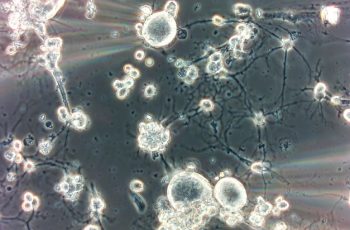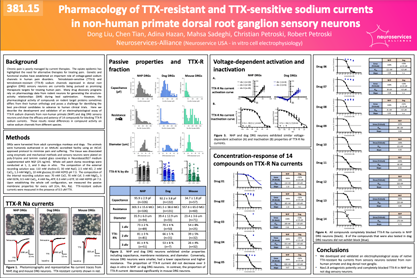
At Neuroservices-Alliance, we are proud to offer a comprehensive suite of assays designed to aid companies in the development of pain compounds.
Pain management presents ongoing challenges in the medical field, driving the need for innovative therapeutic interventions. One promising avenue of pain research involves the targeting of Nav1.8, a subtype of sodium channels implicated in pain signal transmission. Nav1.8 blockers have emerged as potential candidates for treating various pain conditions due to their role in modulating pain perception.
Our team at Neuroservices-Alliance stands ready to support pharmaceutical companies in developing Nav1.8 blockers and other pain compounds. Leveraging our expertise, we offer specialized assays tailored to investigate the pharmacology and efficacy of these compounds.
A significant aspect of our capabilities lies in our extensive experience with DRG (dorsal root ganglia) cell cultures from various species. DRG sensory neurons play a crucial role in pain signal transmission, making them valuable targets for drug discovery efforts aimed at pain alleviation.
Download our poster presented at SfN 2022: “Pharmacology of TTX-resistant & sensitive Na currents in NHP DRG sensory neurons.”

Key findings from our poster revealed that Nav1.8 antagonists potently and completely blocked TTX-R (TTX-resistant) currents in NHP sensory neurons but not in dog sensory neurons. This insight underscores the importance of species-specific considerations in pain compound development and highlights the relevance of our assays in elucidating pharmacological mechanisms.
Our pioneering work with DRG cell cultures from various species positions us as a trusted partner for pharmaceutical companies striving to advance pain research and improve patient care.
In addition to DRG Cells recorginds and iPSC-derived sensory neurons assays, we offer in vivo electrophysiology recordings assays to assess your Pain compounds.
Get in touch with us to discuss your ongoing Pain drug discovery efforts!